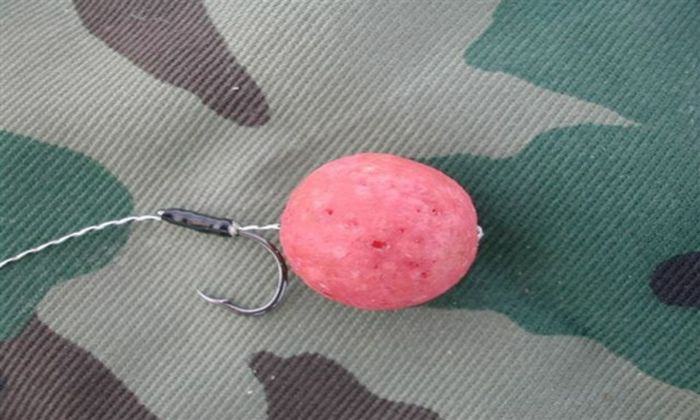Deep-bottom Fishing Techniques You Should Know
Deep-bottom fishing is a challenging feat. Here are a few tips for a safe and bountiful fishing trip!

Bottom fishing is a straightforward fishing technique wherein a sinker or weighted hook is dropped via a fishing line until it reaches the bottom of the water. Although the typical bottom fishing process is simple, it gets complex when employed in deep-sea waters. While bottom fishing is commonly used in calm waters near shore and is meant to catch less aggressive fish species, deep sea fishing targets massive deep-sea species over 100 meters deep. Combining the two techniques results in an exceptional experience that requires professional rigs since deep-sea species behavior and deep-sea water conditions are harsh.
Whether you are new to deep-bottom fishing or seeking to practice your skills, here are a few techniques that deep-bottom anglers should know.
Techniques That Deep-Bottom Anglers Should Know
1. Plan Your Fishing Excursion
Most sea accidents are due to ill-prepared anglers. In open waters, life-threatening situations are likely to arise, such as vessels going adrift due to running out of fuel or encountering engine failures due to poor maintenance. Such conditions could lead to a need to be rescued or to loss of life, making deep-bottom fishing a sport that requires utmost responsibility not only for yourself but your crew as well. Always try to avoid accidents and keep a first aid kit ready just in case.

2. Adequate Navigation Skills Are Required
A basic understanding of coastal navigation, such as using a compass or marine charts, is vital for deep-bottom fishing, especially when you’re fishing outside your local waters. The ability to navigate and read charts could help you find excellent fishing locations and find the safest routes in case of emergency. It would be best to invest in a GPS (Global Positioning Systems) capable of functioning amid situations wherein reception could be compromised, such as heavy rains or when you’re too far from shore.
3. Know Your Rig

Deep-bottom fishing requires a rig similar to bottom fishing rigs that include a mainline that is several hundred meters long, a terminal rig around 2 to 5 meters in length, a variety of hooks, and a heavy sinker that is more or less 2 kilograms in weight. Some anglers like to attach chum bags as well, capable of carrying a large amount of bait.
4. Invest in Hard To Break Line Materials
Nylon lines are typically used by anglers when bottom fishing due to affordability. However, water conditions on deep-sea could be harsh, requiring anglers to use stronger variants such as braided lines since nylon lines are easier to break. Anglers need to store line materials properly to avoid getting them twisted, curled, or exposed to the sun for too long, which could compromise their quality. Anglers should check Lines regularly for flattening signs, wear and tear, rusting, or oil contamination. If your line shows any of these deterioration signs, it’s time to buy a new one.
5. Use a Curved Hook
A single curved hook is best used when deep-bottom fishing. When using a straight hook, there is a high chance that the fish will feel the sharp end and pull back, pulling the hook out. It is hard to control your line, making a curved hook more effective since it is self-hooking, especially when the fish swallows the bait.
6. There’s No Need for an Expensive Sinker
Deep-sea waters could go hundreds of meters below the surface, and it would be hard to reach close to the bottom without the aid of a sinker. Due to harsh currents in deep-sea waters, sinkers can break off easily when fishing. Anglers are advised to use cheap items such as concrete-filled cans, heavy chains, or steel rods as sinkers since these items are easy to find and inexpensive to replace.
7. Do Not Use a Handline
Handlines are commonly used when bottom fishing in shallow waters. However, since deep-bottom fishing calls for thicker and longer mainlines, reeling your line by hand would be challenging. While some anglers prefer using handlines when deep-bottom fishing, it could be hard to manage over a hundred meters long lines without the aid of a reel. Especially when targeting large fish, injuries can result from fighting off the force applied by the fish. Wooden hand reels are cost-effective solutions as anglers could build them themselves or buy them commercially.

8. Identify the Appropriate Bait
The success of your deep-bottom fishing excursion depends highly on the type of bait you’re using. Reeling in lines is already a challenging task, so ensure that fish take your bait to avoid wasting time and lessen the risk of injuries. Bait can either be fresh, frozen or salted. However, not all bait works for all types of fish. Common knowledge among anglers is that fresher bait attracts fish best. You could use bait with a high oil content since it emits a strong odor that attracts fish even from a distance. It is also important to use bait that would stay on the hook to avoid wastage.
9. Drift With the Current
Deep-bottom fishing is typically employed within an anchored position. However, drift fishing could allow you to target areas that an anchored boat cannot reach. When wind speed is less than 5 knots, or the current is parallel to the reef, anglers could easily control the boat and keep lines at a desirable depth.
Deep-bottom fishing is a sport that few anglers attempt due to its challenging nature and the long wait times. However, it offers anglers a diversity of fish that other fishing techniques can not provide, especially when seeking to catch fish in monstrous sizes. Before going on your deep-bottom fishing trip, keep in mind that patience and awareness are the most important techniques to employ to enjoy a safe and exciting experience.




